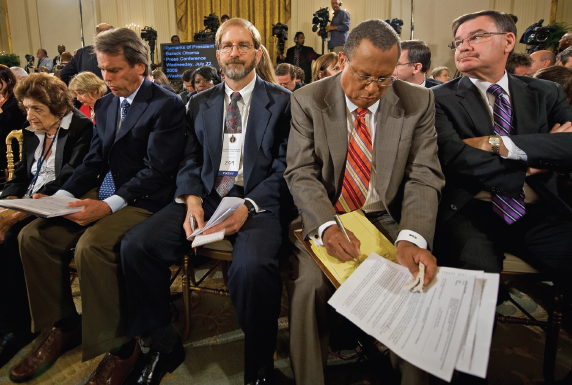What Is News?
Printed Page 386

Many journalists today view themselves as information-gatherers. Chapter 3) is the process of gathering information and making reports that use a narrative framework; that is, news reports tell stories. News reports (whether in print, on TV, or on the Internet) help the public make sense of prominent people, important events, and unusual happenings in everyday life. Over time, journalists have developed a set of criteria for determining whether information is newsworthy—that is, whether it merits transformation into news stories. These criteria include timeliness, proximity, conflict, prominence, human interest, consequence, usefulness, novelty, and deviance.1 For example:
- Most issues and events that journalists cover are timely or new. Reporters, for instance, cover speeches, meetings, crimes, and court cases that have just happened.
- The bulk of these events usually occur close by, or in proximity to, the readers and viewers who will consume the news stories. Although local papers used to offer a broader range of national and international news stories, readers and viewers have usually expected to find the bulk of news devoted to their own communities.
- In developing news narratives, reporters often seek contentious quotes from those with opposing views, creating a sense of conflict. For example, stories on the fight against terrorism almost always feature opposing viewpoints on how our country should make trade-offs between freedom and national security.
- Surveys indicate that most people identify more closely with an individual than with an abstract issue. Therefore, the news media tend to report stories that feature prominent, powerful, or influential people.
- However, reporters also look for the human-interest story: extraordinary incidents that happen to “ordinary” people. In fact, reporters often relate a story about a complicated issue (such as unemployment, health care, or homelessness) by illustrating its impact on one “average” person or “typical” family.
- Many editors and reporters believe that some news must also be of consequence to a majority of their readers or viewers. For example, they might include stories about new business regulations that affect credit cards or home mortgages.
- Likewise, many people look for useful stories: for instance, those offering hints on how to buy a used car or choose a college.
- When events happen that are outside the routine of daily life—that is, they are novel—they will likely generate news coverage. Examples might include a seven-year-old girl who tries to pilot a plane across the country or a fading celebrity who gets arrested for drunk driving.
- Reporters also cover events that appear to deviate from social norms, including murders, rapes, fatal car or plane crashes, fires, political scandals, and wars.
In producing news stories that meet many of these criteria, journalists influence our interpretations of what is going on around us and thus the decisions we make. For example, if we read a newsmagazine article filled with contentious quotations from various experts, we may conclude that life is all about conflict and argument. If we read a story in the newspaper emphasizing consequences of failing to save for retirement, we may conclude that such saving is important—and that we’d better do more of it. And if we watch several TV news segments on plane crashes, we might decide that air travel simply is not safe—and choose a nearby destination (reachable by car) for our next vacation.